Prozesseinrichtung
Die automatisierte Einrichtung mithilfe eines Messsystems kann bis zu zehnmal schneller als manuelle Einrichtverfahren sein.
Mit den Kontrollmechanismen der zweiten Stufe der Produktionsprozess-Pyramide (Productive Process Pyramid™), der Prozesseinrichtung, werden die Beziehungen zwischen der Maschine, dem Werkstück und den Werkzeugen vor dem Zerspanen festgelegt. Diese automatisierten, vorausschauenden Regelungen stellen sicher, dass alles auf Anhieb richtig läuft.
Damit beim Zerspanen von Anfang an nichts schief läuft
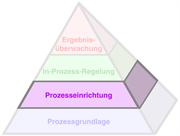 Die zweite Stufe der Pyramide, die Prozesseinrichtung, befasst sich mit Abweichungsursachen, wie beispielsweise Lage der Komponenten, Größe der Werkzeuge, Korrektur der Werkzeugmaschine, und stimmt die Bearbeitungsschritte auf die tatsächliche Position des Werkstücks ab.
Die zweite Stufe der Pyramide, die Prozesseinrichtung, befasst sich mit Abweichungsursachen, wie beispielsweise Lage der Komponenten, Größe der Werkzeuge, Korrektur der Werkzeugmaschine, und stimmt die Bearbeitungsschritte auf die tatsächliche Position des Werkstücks ab.
Hierbei handelt es sich um vorbeugende Regelungen, die kurz vor der spanenden Bearbeitung zum Einsatz kommen.
Werkzeugmessung ermittelt ...
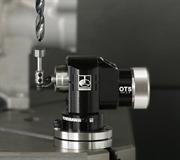 die Länge der Spindel-Nulllinie, um eine Höhenkorrektur festzulegen, und prüft, ob die Länge innerhalb der definierten Toleranz liegt
die Länge der Spindel-Nulllinie, um eine Höhenkorrektur festzulegen, und prüft, ob die Länge innerhalb der definierten Toleranz liegt- den Drehdurchmesser, um das Maß für die Werkzeugkorrektur festzulegen
Werkstückeinrichtung ermittelt ...
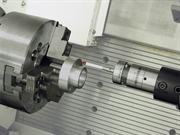 den Werkstücktyp für die Auswahl des richtigen NC-Programms
den Werkstücktyp für die Auswahl des richtigen NC-Programms- die Position eines Bezugsmerkmals, um ein Arbeitskoordinaten-Bezugssystem (WCS) festzulegen
- die Größe der Rohlinge/Werkstücke, um Auf- bzw. Untermaße und die Sequenz der Schlichtbearbeitung festzulegen
- die Lage und Orientierung eines Teils (relativ zu den Maschinenachsen), um die Koordinatendrehung festzulegen
Maschinenjustage ermittelt ...
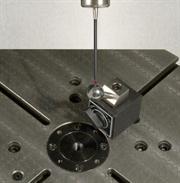 die Ausrichtung der Drehachse, des Drehtisches oder der Spannmittel für die Positionierung und Aufspannung von Werkstücken
die Ausrichtung der Drehachse, des Drehtisches oder der Spannmittel für die Positionierung und Aufspannung von Werkstücken- die Position des Zentrums eines Drehtisches und/oder von Referenzpunkten an Spannmitteln
Vorbeugende Regelung
Die automatisierte Einrichtung mithilfe eines Messsystems kann bis zu zehn Mal schneller als manuelle Einrichtverfahren sein. Das gibt Ihnen mehr Zeit für das Spanen.
Darüber hinaus sind Messsysteme kalkulierbar - Sie werden genau wissen, wie lange die Einrichtung dauert und können entsprechend planen.
Die Einrichtung von Prozessen, die Messanwendungen direkt auf der Maschine nutzen, ist vollständig über Programme steuerbar. Fachkräfte müssen daher nicht mehr Messungen aufnehmen, Berechnungen anstellen und Korrekturwerte eingeben.
Die Messtaster zum Prüfen von Werkstücken, Werkzeugkontrollsysteme und die Productivity+™ Software von Renishaw sind für eine schnelle, automatisierte und wiederholbare Einrichtung von Routinen zur spanenden Bearbeitung unerlässlich.
Produktive Prozessmuster
-
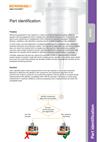 Educational article: (AP200) Productive Process Pattern: Part identification [en]
Educational article: (AP200) Productive Process Pattern: Part identification [en]
Productive Process Pattern™ from the process setting layer of the Productive Process Pyramid™. Use a workpiece inspection probe to take measurements on the raw material (or previously machined features) to determine the identity of the component, the component alignment on the machine tool, and/or to check for non-conforming material.
-
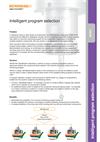 Educational article: (AP201) Productive Process Pattern: Intelligent program selection [en]
Educational article: (AP201) Productive Process Pattern: Intelligent program selection [en]
Productive Process Pattern™ from the process setting layer of the Productive Process Pyramid™. Use a workpiece inspection probe to determine whether the component blank loaded in the machine tool is the correct one for the machining program. Where a unique, identifiable feature exists on the component (or one can be added) a probe may be used to make a logical decision about which of the available cutting programs should be used.
-
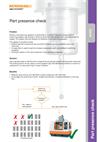 Educational article: (AP202) Productive Process Pattern: Part presence check [en]
Educational article: (AP202) Productive Process Pattern: Part presence check [en]
Productive Process Pattern™ from the process setting layer of the Productive Process Pyramid™. Use a workpiece inspection probe to identify which components are actually present and should be machined. The probing results can be used to control program logic that determines whether to machine a component or to skip machining if no part is present.
-
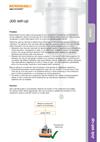 Educational article: (AP203) Productive Process Pattern: Job set-up [en]
Educational article: (AP203) Productive Process Pattern: Job set-up [en]
Productive Process Pattern™ from the process setting layer of the Productive Process Pyramid™. Use a workpiece inspection probe to automatically measure the location of the component and update the relevant offset. Where appropriate, also use the probe to update the orientation of the component using a controller function or a rotary axis.
-
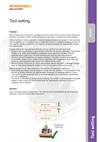 Educational article: (AP204) Productive Process Pattern: Tool setting [en]
Educational article: (AP204) Productive Process Pattern: Tool setting [en]
Productive Process Pattern™ from the process setting layer of the Productive Process Pyramid™. Use a tool setting probe mounted within the machine tool to automatically set the length and diameter of each tool before machining begins.
-
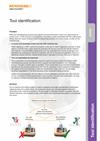 Educational article: (AP205) Productive Process Pattern: Tool identification [en]
Educational article: (AP205) Productive Process Pattern: Tool identification [en]
Productive Process Pattern™ from the process setting layer of the Productive Process Pyramid™. An on-machine tool setting system is used to establish tool length and diameter offsets when replacing tools. As a safety check, the measured values are compared against reference dimensions with a tolerance applied: if the tool length or diameter deviation is greater than the allowed tolerance, the process will stop safely before any machining takes place or any damage can occur.
-
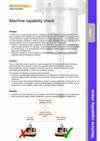 Educational article: (AP206) Productive Process Pattern: Machine capability check [en]
Educational article: (AP206) Productive Process Pattern: Machine capability check [en]
Productive Process Pattern™ from the process setting layer of the Productive Process Pyramid™. Use a workpiece inspection probe to perform a machine capability test before machining. Commence machining only if the machine is within the capability limits defined for the component. Measuring known reference features shows the machine is capable of positioning itself accurately and repeatably, or if there is a capability problem.
-
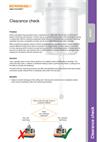 Educational article: (AP207) Productive Process Pattern: Clearance check [en]
Educational article: (AP207) Productive Process Pattern: Clearance check [en]
Productive Process Pattern™ from the process setting layer of the Productive Process Pyramid™. Use a workpiece inspection probe to test critical sections of a toolpath where interference is possible. The probe will stop when a collision is detected making it safe to perform this check: a cutting tool is not able to provide this feedback. Proceed with the machining process only after all potentially hazardous areas have been tested and probe results indicate that no obstacles exist within the tool path.
-
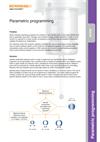 Educational article: (AP208) Productive Process Pattern: Parametric programming [en]
Educational article: (AP208) Productive Process Pattern: Parametric programming [en]
Productive Process Pattern™ from the process setting layer of the Productive Process Pyramid™. Use a workpiece inspection probe to measure features which vary between parts within a given family and allocate macro variables for those feature measurements. Different parts can be produced by a family-specific rather than a part-specific program by controlling features that vary between parts using logic based on probe measurement results.
-
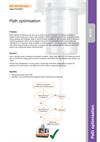 Educational article: (AP209) Productive Process Pattern: Path optimisation [en]
Educational article: (AP209) Productive Process Pattern: Path optimisation [en]
Productive Process Pattern™ from the process setting layer of the Productive Process Pyramid™. Use a workpiece inspection probe to measure workpiece condition. Apply logic based on the measured stock size to control the cutting path so that air cutting is eliminated and machining moves always cut metal.
-
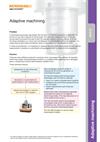 Educational article: (AP210) Productive Process Pattern: Adaptive machining [en]
Educational article: (AP210) Productive Process Pattern: Adaptive machining [en]
A manufacturing process may dictate that the form of a finished component is dependent on the form of the input material for that process. In these circumstances, it is necessary to measure the form of the input component and use the measurement to produce a customised cutting program which is unique to that component.
Dokumente
-
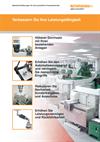 Broschüre: Messtechniklösungen für eine produktive Prozesskontrolle
Broschüre: Messtechniklösungen für eine produktive Prozesskontrolle
Verbessern Sie Ihre Leistungsfähigkeit
-
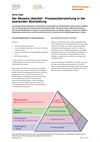 White Paper: Der Bessere überlebt - Prozessüberwachung in der spanenden Bearbeitung
White Paper: Der Bessere überlebt - Prozessüberwachung in der spanenden Bearbeitung
In schwierigen Zeiten konzentrieren sich Hersteller auf die Reduktion ihrer Betriebskosten, können sich aber vielleicht nicht den Ausweg über den Erwerb produktiverer Maschinen leisten. Wie können Kosten radikal reduziert werden, ohne bestehende Maschinen zu ersetzen? In diesem Beitrag werden vier Bereiche analysiert, in denen sich erhebliche Einsparungen erzielen lassen wenn Unternehmen bereit sind, die Steuerung ihrer Bearbeitungsprozesse zu ändern.
-
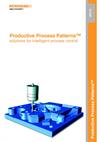 Educational article: (AP010) Productive Process Pattern: Productive Process Patterns™ [en]
Educational article: (AP010) Productive Process Pattern: Productive Process Patterns™ [en]
Introduction to the Productive Process Patterns™ - solutions for intelligent process control within manufacturing













